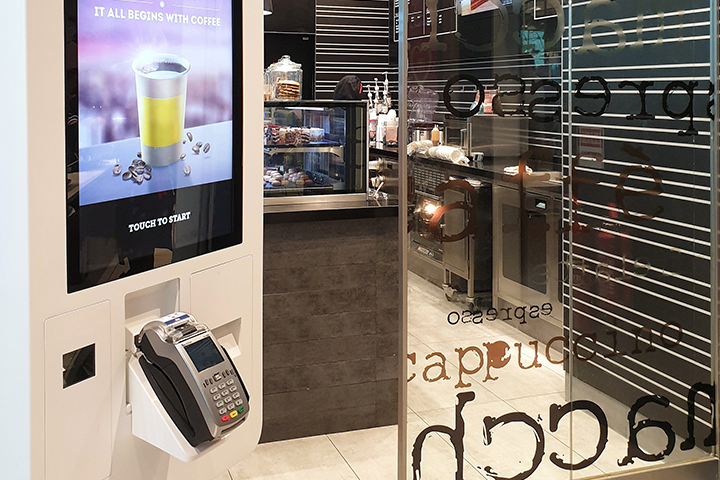10:05 am
Fast Food Restaurant Design And Building Trends You Can’t Ignore

Between innovations in technology, an increasing desire to bring internationally renowned chains to Canada, and the proliferation of ‘convenience culture’ – the quick-service restaurant industry continues to evolve and transform.
How might current fast food restaurant trends impact the engineering and design of your building and infrastructure?
Charl de la Harpe, a Senior Architect with CTM Design Services, walks us through four trends that should be on everyone’s radar.
Trend 1: Self-ordering kiosks…meet Self-Serve Pickup Kiosks
McDonald’s drew a ton of attention when it introduced self-ordering kiosks in its restaurants. Many other chains are following suit. And now, those who order online can bypass the front counter entirely, thanks to another new technology.
With Self-Serve Pickup kiosks, once food ordered online is ready it is placed in an individual locker unit that keeps it warm and fresh. The customer is sent a PIN or QR code that will open the kiosk. Two companies offering this technology include the Carter-Hoffmann Pick Up Cabinet (PUC) and Apex Axcess 2000.H Pick-Up Station.
“From a design perspective, installing self-ordering kiosks and self-serve pickup units takes a bit of planning as it will impact cueing and customer traffic within the restaurant. Renovations may be required to free up space, which could reduce seating. Additional wiring will be needed to power these kiosks, but such upgrades can typically be done with minimal disruption to operations,” explains de la Harpe.
Trend 2: Voice-Command Ordering Systems
What if drive-thru kiosks were automated, so a customer could place their order without talking to a team member? This may soon be the new norm. ZIVELO and Mastercard have developed an automated ordering system that uses voice recognition technology. This technology was showcased at the 2019 National Restaurant Association Show.
Utilizing artificial intelligence, the system can even make upsell recommendations based on the order (“would you like orange juice with that?”). Thanks to voice recognition software, it can even remember a customer’s previous orders!
“I suspect these systems will be designed to follow the same footprint and wiring requirements as units currently employed in drive-throughs to maximize ease of adoption,” de la Harpe says.
“As with many new technologies, there may be some bugs to work out at the beginning. But I think voice-command ordering will be an innovation that is soon adopted on a large scale.”
Trend 3: Further Construction of International Chains
With Canada’s diverse multi-cultural makeup, this is a trend that shows no sign of abating. According to Craig Patterson, editor-in-chief of Retail Insider, four chains are preparing for Canadian expansion.
Known for its fried chicken and Jolly spaghetti, Jollibee (Philippines) recently opened a sixth Canadian location in Edmonton, with customers lining up a week in advance.
Founded in Torino, Italy: Eataly is the real deal: a combination authentic Italian restaurant/ takeaway service/ market that opened its first store in Toronto in 2019. They even run cooking classes out of the massive 50,000 square foot space in Toronto’s Manulife Centre.
American chicken chain Chick-fil-A (USA) is opening a new QSR in Toronto. Patterson anticipates the goal is to have 100+ locations across Canada.
In-N-Out Burger is a huge American franchise that has been around for 70-years. They recently opened a pop-up store in Aldergrove (a community in Langley BC). Patterson believes they are testing the market for possible expansion.
CTM’s Charl de la Harpe says it will be imperative that these new chains and their franchisees partner with experienced engineering and design firms that specialize in QSRs, and are familiar with the unique bylaws and regulations in each Canadian market.
“International design standards need to be adapted to Canadian requirements. Chains often find it easier to choose one regional engineering firm that is experienced working across multiple provincial borders – versus choosing a different firm for each build.
“Naturally, there are cost efficiencies that come with this approach, including lessons learned from one project to the next,” de la Harpe adds.
Trend 4: More Ghost Kitchens
They’re quick-service restaurants, minus the storefront. These off-site cooking facilities cater to the online ordering and delivery sectors. They’re often located in industrial areas of town where real estate costs are significantly lower.
“With ghost kitchens, design requirement is significantly reduced compared to the needs of a storefront location,” de la Harpe says. “Yet it is still advisable to work with an engineering and design firm with direct food service experience. This will ensure your facility meets stringent bylaw and code requirements around food service health and safety.”
